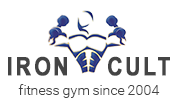Physical Training for Better Flexibility
Generally, active people are more flexible than inactive ones. In other words, when muscles are disused they become dysfunctional. For example, sitting for long hours tends to lead to a shortening of two muscle groups—the hip flexors (the strips of muscles on the front of the pelvis) and the front torso muscles, the chest and shoulder muscles. Hip flexors invariably shorten when you sit, and the front torso muscles, the shoulder and chest tend to shorten when you slump forward.
However, any form of exercise requires good posture. If you consider the above example the hip flexors will reach their optimal length in almost any sports or fitness related movement. For example, lunges, Bulgarian squat, squat, etc. Also, the shoulders are naturally pulled back while performing most of the fitness related movements. For example, squat, deadlift, bench press, etc. So you see that physical training of any form will itself nudge you towards better flexibility.
Thus, people who exercise are at least a bit more flexible than those who don’t.
